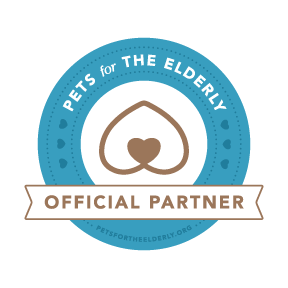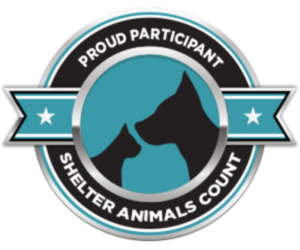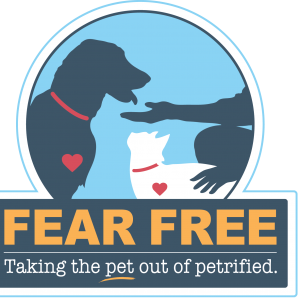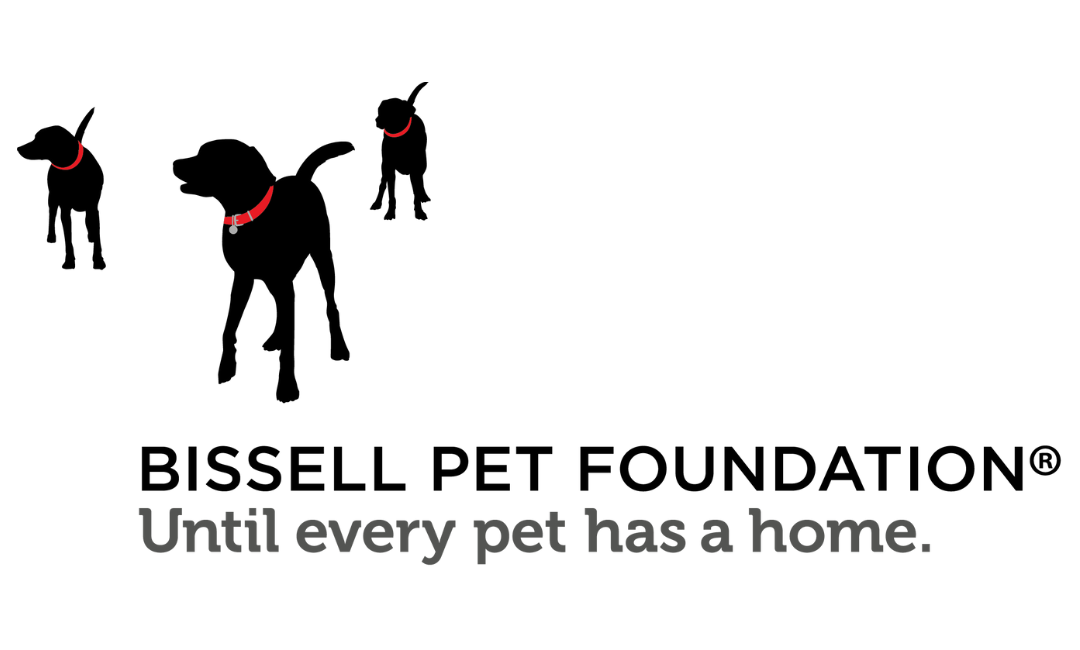Wildlife Rehabilitation Center
Resources & FAQs
We love ALL animals, domestic and wildlife. Explore some of the most commonly asked questions regarding wildlife.
The Wildlife Rehabilitation Center is licensed to care for native Pennsylvania wildlife, state and federally endangered and threatened species and migratory birds. We cannot accept farm animals, exotic pets, big cats, or wildlife physically transported from out of state.
Our facility is not equipped to accept or care for: white-tailed deer, venomous snakes, or bears. These questions may be referred to the correct state agency:
- PA Game Commission for deer or bears: 724-238-9523
- PA Fish and Boat Commission for venomous snakes: 814-359-5110
Unfortunately, we do not have a transport service. We do rely on the public to bring in animals to our Rehabilitation clinic in Verona, PA. We are not able to diagnose and treat wildlife that are not physically present in the clinic.
Need help with capturing and transporting an injured or orphan wild animal? Wildlife In Need (WIN) is a non-profit, licensed volunteer-based transport organization that operates throughout PA. For more information visit https://winemergencyresponse.com/
Unfortunately no, specific permitting is required to admit and treat wildlife so all wild animals need to be brought directly to the rehabilitation clinic in Verona. Our Eastside and Northside locations are not able to accept wildlife.
The permits that allow the Wildlife Rehabilitation Center to legally operate state that the public is not permitted to interact with or “visit” with our patients. The staff works very hard to limit human interactions with patients in order to keep them wild as required for release. We do however offer tours of the facility through our education department as well as maintain a small menagerie of educational animal ambassadors that participate in various educational programs. Check out our education department for more information! (link their page)
Our helpline coordinator will be happy to provide an update on the patient you brought in! These are all done via email to keep our phone lines open for emergency calls. For updates, please email WLCupdates@humaneanimalrescue.org. Since we care for thousands of wild patients each year, please allow for a 5 to 7-day grace period on your inquiry.
Luckily there are rehabbers located all over the country! Some are in cities and others are in remote locations. If you are in PA, but not near our center, you can find a listing of rehabilitators at: www.pawr.com
If you are not in PA, you can find information on finding rehabilitators at: www.ahnow.org.
Don’t forget, in the meantime, you can always call our helpline to get guidance on how to safely capture an animal in need (regardless of your location).
People who find wild animals, particularly orphaned animals, sometimes want to care for them. We strongly discourage this practice for various reasons:
First, there are local, regional, and federal laws that may prohibit you from having a wild animal in your possession, even while temporarily caring for it with the intention of release. Wildlife rehabilitators are highly trained, permitted, and prepared to care for wildlife for rehabilitation. Having the necessary equipment, caging, food sources, and environment required by a wide array of species.
Rehabilitators are trained to recognize and deal with injuries, illnesses, parasites, and other conditions. There are diseases that humans and pets can contract from wildlife, similar to diseases that domestic pets and humans can transmit to wildlife. They take every precaution to ensure a safe environment for the humans in the clinic as well as the patients in their care.
They can administer appropriate medications, manage wounds, and stabilize an animal that is in shock. Not all veterinarians have experience with wildlife. Rehabilitators are required by state and federal regulations to work with a veterinarian who specializes in wildlife.
Rehabilitators are trained to care for an animal while preserving its wildness. Young birds and mammals suffer as a result of human impact. An animal that has lost its normal or innate fear of humans will not survive in the wild. Releasing a tame wild animal is signing its death sentence.
“The field of wildlife rehabilitation is a discipline with its own body of literature, training, and certification. In the best interests of wildlife, we urge you to have their well-being as your first priority: entrust them to the capable hands of a trained, experienced, permitted rehabilitator.” © International Wildlife Rehabilitation Council
Studies show that releasing an animal into the wrong habitat usually results in the animal’s death within two weeks. Only Wildlife Rehabilitation Center staff and volunteers are permitted to perform releases to ensure safety, proper habitat, time of day, and time of year criteria are being met. Sometimes it is important to release animals back to their own territory, but other times it is not essential. Staff will consider each animal’s individual case and make this determination. In each case, it is important that we know where the animal was found and what the circumstances of the injury were at its time of admittance. When it meets their needs, some animals will be released on Wildlife Rehabilitation Center property. When the staff determines that an animal should be released where it was found, they will obtain prior permission from the property owner. The owner may attend the release of non-RVS (rabies vector species) animals.
Learn about the Wildlife Rehabilitation Center and Pennsylvania regulations HERE.
Common Animal Information
This section can answer many questions in order to offer proper help. If you do not find the answer to your query, call the Wildlife Rehabilitation Center at 412-345-7300 X500.
A baby opossum clings to his or her mother’s back as she travels around looking for food. Sometimes, they fall off or are separated before they are old enough to be on their own.
Step 1: Determine if the opossum is sick or injured and in need of human intervention. If you see blood or the opossum is lying on its side and not moving, there is something very wrong and it needs medical attention. Using gloves, towels, or blankets, move the opossum into a box and keep it somewhere quiet and warm. Arrange to get the animal to the Wildlife Rehabilitation Center immediately.
Step 2: If the opossum appears to be healthy, determine if it is too small to be on its own. Compare the opossum’s body size to a dollar bill. An opossum is old enough to be on its own if the length from his nose to his tail is six inches (the length of a US dollar bill). If it is big enough, take the opossum to a safe place away from roads and let it go. If the opossum is smaller than a dollar bill, move it to a box with a towel, keep in a warm and quiet place, and arrange to get the animal to the Wildlife Rehabilitation Center immediately. Do not try to feed it! Opossums have very sensitive stomachs when young and many foods or milks will make them very sick.
A mother rabbit only visits her nest in the early morning and late evening. By staying away from the nest, she attracts less attention and reduces the chance of an attack on the nest. Mother rabbits do not build very elaborate nests – they are often just a shallow depression in the ground covered with leaves or grass, sometimes in the middle of a yard. They are often found when mowing the lawn. We’ve even found nests under swing sets!
If you find a nest of infant rabbits, it’s very likely the mother is just away and they do not need help. Before removing the babies, determine if the nest is actually abandoned.
Step 1: Determine if the nest is truly abandoned by the mother and the babies need human intervention. If any nesting material has been removed, repair the nest by replacing any dried grass/leaves that were originally covering the nest.
Step 2: Place two twigs or pieces of thread in the shape of an ʻXʼ over the entrance to the nest.
Step 3: Wait at least 12 hours and recheck the nest. If the twigs/threads have been moved, the mother is returning to the nest to care for her young. Leave the nest alone and allow Mom to do her job!
Are there any flies around the nest or dead babies inside? If so, the nest is abandoned. Place the survivors in a box, move to a warm and quiet place and arrange to get the babies to the Wildlife Rehabilitation Center immediately.
Do not try to feed it! Many foods or milks will make them very sick.
But my dog tore up the nest…
The mother will still come back and care for the babies. Remove any babies that were injured, and follow steps above. Try to keep your dog away from that area until the rabbits have left the nest. Rabbits typically leave the nest at 3-4 weeks old. If it is not possible to keep your dog away, take a laundry basket and place it upside down over the nest. Lay some bricks on top to weigh it down. If your dog is insistent, place a wheelbarrow upside down, over the nest. This will allow enough space for the mother to get to the nest, but keep your dog away. The basket or wheelbarrow should be removed so the mother can get to the nest between 7pm and 8am, but your dog should be able to be in the same area while the nest is covered. Lay twigs in an ʻXʼ to check that the mother is coming while the nest is uncovered.
But my cat brought the rabbit inside…
Anytime an animal has been inside of a cat’s mouth, the animal is in need of immediate care. Arrange to get the baby to the Wildlife Rehabilitation Center immediately.
Step 1: Determine if the squirrel needs human intervention. Is the squirrel bleeding, very cold, limping, a victim of an animal attack, or unconscious? If so, move the squirrel into box and place in a warm and quiet place. Arrange to get the animal to the Wildlife Rehabilitation Center.
Step 2: If the squirrel appears healthy, determine if he is too young to be on his own. First, search for a nest. Squirrel nests are located on the high branches of trees. They look like a large “knot” of branches and leaves. If you think you’ve found the nest, place the baby in a box at the base of the tree. Monitor the area from a distance. The mother should return and carry the baby back up to the nest. If the mother does not return in 4-6 hours, arrange to bring the baby to the Wildlife Rehabilitation Center.
If the tree has been cut down, call the Wildlife Rehabilitation Center for further instructions.
Step 3: The baby is alone and running up to people. If you find a single baby squirrel alone and it is running up to people, arrange to get the baby to the Wildlife Rehabilitation Center immediately.
Do not try to feed it! Many foods or milks will make them very sick.
Step 1: Determine if the bird needs human intervention. Is the bird bleeding, limping, very cold, dragging a wings, or unconscious? If so, arrange to get the babies to the Wildlife Rehabilitation Center immediately.
Step 2: Determine if the bird needs to be in the nest and return him if necessary. If the bird is naked or just partially feathered, it will need to be returned to the nest if possible. Search the trees and bushes in an attempt to find the nest. If you are SURE that it is the correct nest, gently place the baby back in. Contrary to popular belief, human scent will not cause the parents to reject the baby; songbirds do not have a highly developed sense of smell. If the nest is not accessible, or you cannot find it, follow the instructions on how to make a substitute nest.
If the entire nest has fallen or been destroyed, a substitute nest can be placed in a wicker basket, a strawberry basket, or a kitchen colander and hung in the same tree. The container does not matter as long as it’s unobtrusive and has excellent drainage. A wicker basket with small twigs on the bottom is the best option. A strawberry basket with twigs can also be used. Locating the nest near the original spot increases the probability of success but is not essential. Often the parents will continue to feed even if the nest is located in a nearby tree (5 to 10 feet away), which may be necessary if the nest accident occurred because a tree fell or was removed. Parent birds are usually very accepting of the nest being disturbed for a short period of time.
Step 3: Leave the bird alone if it is too old for a nest. If the bird is fully feathered and has a short stubby tail, it is called a fledgling. They are frequently found hopping on the ground and are mistaken for injured adults. Fledglings can be spotted by their short tail feathers. They are baby birds that are too big for the nest but too young to fly. They live on the ground for a few days while they practice flying and their parents feed and care for them. They should be monitored from a distance to see if the parents return. While monitoring, you will need to watch the bird constantly. It only takes the parents a few seconds to feed their young. It is normal for them to be alone for short periods of time. If no parent returns for several hours, arrange to get the animal to the Wildlife Rehabilitation Center immediately.
Step 4: If the bird is found in an unsafe area such as near a road or sidewalk, pick him up and move him to a safer location near where he was originally found. Moving him too far away will make it difficult for his parents to find him. If the bird is in an area where there are a lot of cats, move him to an area where there is cover, such as bushes or shrubs. The parents will work to protect him from the cats. Please don’t separate him from his parents because there “are a lot of cats in the neighborhood.” All birds must learn to live with cats and it is easier for them to learn while their parents are still protecting them.
Step 5: If you have had the bird for less than 6 hours, put him back outside where you found him and watch from inside to see if the parents return to care for him. If they have not returned after 45 minutes, bring the bird to the Wildlife Rehabilitation Center. Baby birds need to eat every 45 minutes from sun up to sun down and need to socialize with other birds so they grow up knowing how to interact with conspecifics. By bringing the bird to the Wildlife Rehabilitation Center, you are bringing it to a place where it will have the opportunity to consume the correct diet and grow up knowing how to find its own food and protect itself. If you have already had the bird for a few days, arrange to get the bird to the Wildlife Rehabilitation Center immediately.
If you can’t get to the Wildlife Rehabilitation Center immediately but you have a baby songbird, you must keep him warm (we suggest a heating pad set on low under ½ of the box of a warm hot water bottle) and in a quiet place. Using tweezers, you can offer him kitten food that has been soaked in water until it is soft (crunchy kind only, not canned). The bird will need to eat every 30-45 minutes from sun up to sun down. The soaked chow will provide it with the calories and protein it needs for the night, but not much longer. We feed our baby birds a mixture of things with over 15 ingredients to make sure they have the right balance of nutrients, vitamins, fats, and proteins!
Mother deer have their fawns in the spring (May-June). What many concerned people don’t realize is that a lone fawn is almost never abandoned. Like rabbits, a mother deer avoids her baby during the day in order to keep predators away. Infant fawns are too small to keep up with their mother while she forages far and wide for enough food to produce milk. The doe may leave her fawn alone for hours at a time, only to return when the coast is clear. If you have come across a fawn lying silently and still in the grass, leave it alone! It is waiting for its mother, who won’t come out as long as a human is present.
But the fawn is lying in an unsafe place…
If a fawn is found on or near a road, it can be picked up and moved out of harm’s way. Using a blanket, move the fawn and then let it be. Don’t worry about getting a human scent on the fawn; a doe will not reject her baby just because it has an unusual smell.
But this fawn has been here for days…
Sometimes if a mother feels an area is very safe, she will leave her fawn in the same area for days at a time. As long as the fawn is lying quietly and does not appear stressed (not getting up and calling for its mom), it is doing exactly what its mother told it to do.
Uh oh! I’ve already brought a fawn home before I read this, but now I don’t think it needed help…
If you have had the fawn for less than 24 hours, take it back to where you found it immediately. Its mother is probably searching for it. Replace the fawn where you found it and leave the area so the mother will feel safe enough to come out and care for the fawn. Don’t worry about the human scent on the fawn – the mother will not reject her baby because it smells funny. You can return to the area and check in 12 hours to see if the fawn is still there. If it is or if you have had the fawn for over 24 hours, call the Wildlife Rehabilitation Center for a referral to rehabilitation center that accepts deer. They need very specific care to grow up healthy. The Wildlife Rehabilitation Center does not accept deer and cannot care for deer at our center.
This fawn looks injured…
If you find a fawn who is obviously ill (lying on its side kicking and crying, bloody, or covered in flies) or hiding near the corpse of a doe, it needs help. Do not try to hold or comfort the fawn. Remember that it’s a wild animal that won’t find humans soothing at all. Call the Wildlife Rehabilitation Center at 412-345-7300 x500 for a referral to a rehabilitation center that admits fawns. Fawns are very fragile animals and exceptionally hard to care for in captivity. If the animal is to have any chance of being returned to the wild, it needs to be turned over to a licensed deer rehabilitator. The Wildlife Rehabilitation Center does not accept deer and cannot care for deer at our center.
But the fawn is really cute…
Even though wildlife can be incredibly cute and it is very easy to get attached, you must consider what is best for the fawn. Feeding it a bottle of cow’s milk or milk replacement formula makes fawns very, very sick. They can also imprint very easily on humans, which is cute when they are little, but very dangerous when they are a fully-grown 150 pounds and don’t know how to survive on their own. Please leave caring for fawns to the professionals!
• Raccoons
• Skunks
• Bats
• Foxes
• Groundhogs
• Coyotes
If you have questions or concerns about these species, call the Wildlife Rehabilitation Center 412-345-7300, ext. 500.
Direct from the Center for Disease Control: Rabies is a preventable viral disease of mammals most often transmitted through the bite of a rabid animal.
Rabies infects the central nervous system, ultimately causing disease in the brain which leads to death. The early symptoms of rabies in people are similar to that of many other illnesses, including fever, headache, and general weakness or discomfort. As the disease progresses, more specific symptoms appear and may include insomnia, anxiety, confusion, slight or partial paralysis, excitation, hallucinations, agitation, hypersalivation (increase in saliva), difficulty swallowing, and hydrophobia (fear of water). Death usually occurs within days of the onset of these symptoms. There is no cure for rabies virus, only prevention, and once symptoms begin rabies virus infection is fatal.
Transmission of rabies virus usually begins when infected saliva of a host is passed to an uninfected animal. The most common mode of rabies virus transmission is through the bite and virus-containing saliva of an infected host. Though transmission has been rarely documented via other routes such as contamination of mucous membranes (i.e., eyes, nose, mouth), aerosol transmission, and corneal and organ transplantations.
What animals most commonly carry Rabies?: All species of mammals (including humans) are susceptible to rabies virus infection, but only a few species are important as reservoirs for the disease. In the United States, distinct strains of rabies virus have been identified in raccoons, skunks, foxes, groundhogs, and coyotes. Several species of insectivorous bats are also reservoirs for strains of the rabies virus. These species are referred to as Rabies Vector Species (RVS). Even if an animal appears friendly and lets you approach it, it is still a high rabies risk. Sometimes symptoms are not obvious.
Please never handle RVS animals without protecting yourself from any exposure to saliva or bites. This includes both adult and baby RVS animals.
Does the Wildlife Rehabilitation Center accept RVS animals?: Yes – the Wildlife Rehabilitation Center cares for all of PA’s native wildlife and treats all animals the same. Our main goal is to see the release of any wild animal back into the wild.
What is an exposure and what happens when you are exposed?: Rabies is transmitted only when the virus is introduced into a bite wound, open cuts in skin, or onto mucous membranes such as the mouth or eyes. Under most circumstances, two categories of exposure — bite and nonbite — should be considered. Humans and animals (like pets) are considered exposed when: bitten, skin is contaminated with saliva, prolonged exposure has occurred (such as keeping wild RVS as a pet), and multiple parties have handled the animal without gloves.
The Wildlife Rehabilitation Center takes human exposure to potential rabies virus infection very seriously and will work with the Health Department to take the next steps in assuring your health and safety. We must report exposures and there is no exception to this rule due to the serious nature of potential infection.
If you must handle an RVS animal, wear protective gloves and avoid being bitten at all costs.
• Get your family pets regularly vaccinated.
• Never attempt to feed an RVS animal no matter the age: adult and baby.
• Avoid exposure to saliva, this includes letting an RVS animal lick you.
• Please never attempt to keep wild animals as pets.
This may or may not be a problem. If a mother has babies in the den, she may be hunting. Animals can also be routed from their den accidently and become disoriented until they find a new place. If the animal does not appear injured, give it a day or two for reorientation. The problem may rectify itself naturally.
This is a very dangerous situation and can have many causes, including head injury, imprinting, or disease. Unusual aggression or friendliness are two of the clinical signs of rabies. Even if not rabid, the animal should be treated as such. Do not take chances with your life.
Imprinted animals are those who were hand raised (usually by the public) and have no fear of people. They are still wild animals, though, and even friendly ones can have a sudden change in behavior.
Do not approach the animal. Keep pets and children away. Seek advice by calling our Wildlife Rehabilitation Center helpline.
Humane Animal Rescue of Pittsburgh does not remove nuisance animals, but does recommend species-specific Humane Harassment techniques. These can be found in the Living with Wildlife section.
The Box-Over Method
The best way to protect yourself is to never touch the animal in the first place. The box-over method is the most preferred method of capture. You can capture most animals safely without touching them, and the animal never touches you.
To capture an animal with this method you need an appropriately sized container such as a cardboard box that is large enough to snugly fit the animal in. The box needs to be strong enough to keep the animal from escaping, breaking out, or – for mammals such as woodchucks – chewing through. For large animals that are too strong for a cardboard box, a metal trash can works well.
This capture container will also be your transport device and will therefore need ventilation. Most cardboard boxes breathe without additional ventilation, but if you are planning on using a container that will be airtight, several small holes places near the top of the container will allow for air exchange.
When capturing the animal, this container will be slipped over the animal, upside down, trapping the animal in the container against the ground.
You also need a stiff, thin piece of cardboard, metal, plastic, or wood that is larger than the opening of the container. You can use the lid of the box if there is one. Once the container is over the animal, the stiff sheet or lid is used to slide under the container between the animal and the ground.
You will also need tape to secure the two pieces together. Duct tape or strong packing tape both work well for this.
Once you have everything you need, approach the animal slowly. If the animal is mobile, you may need several people to cut off its escape routes. Make sure the direction away from you does not have hazards like traffic, water, or thick briars where the animal may flee and experience further injury.
When you are close enough, quickly place the container over the animal, trapping it inside.
Hold the container down firmly for a moment until the animal stops struggling.
Slowly work the thin, stiff board under the edge of the container and slide it between the animal and the ground. You may have to use a gentle sawing motion to get the board completely under, or wiggle the container to push the animal on top of the board. Work slowly until the board is past all the edges of the container.
Once done, you have successfully contained the animal without touching it. You can now secure the lid or stiff sheet to the container with heavy tape. Very carefully roll the container until it is upright and further secure the lid.
Transportation
- Once the animal is captured, immediately bring it to the center.
- Do be safe traveling.
- Do keep the animal in the dark and remove any visual stimuli.
- Do avoid the temptation to peek
- Do not transport animals in the trunk or in the open bed of a pickup.
- Do not play the radio.
- Do not smoke.
DONATE
Make a Difference!
Your gift today will help save an animal’s life. We rely on donations from friends like you to rescue, shelter, and find homes for pets. Please be as generous as you can to help us give them the care they need and the love they deserve.
NEWSLETTER SIGN UP
Interested in more content like this? Subscribe & follow us to stay up-to-date.





